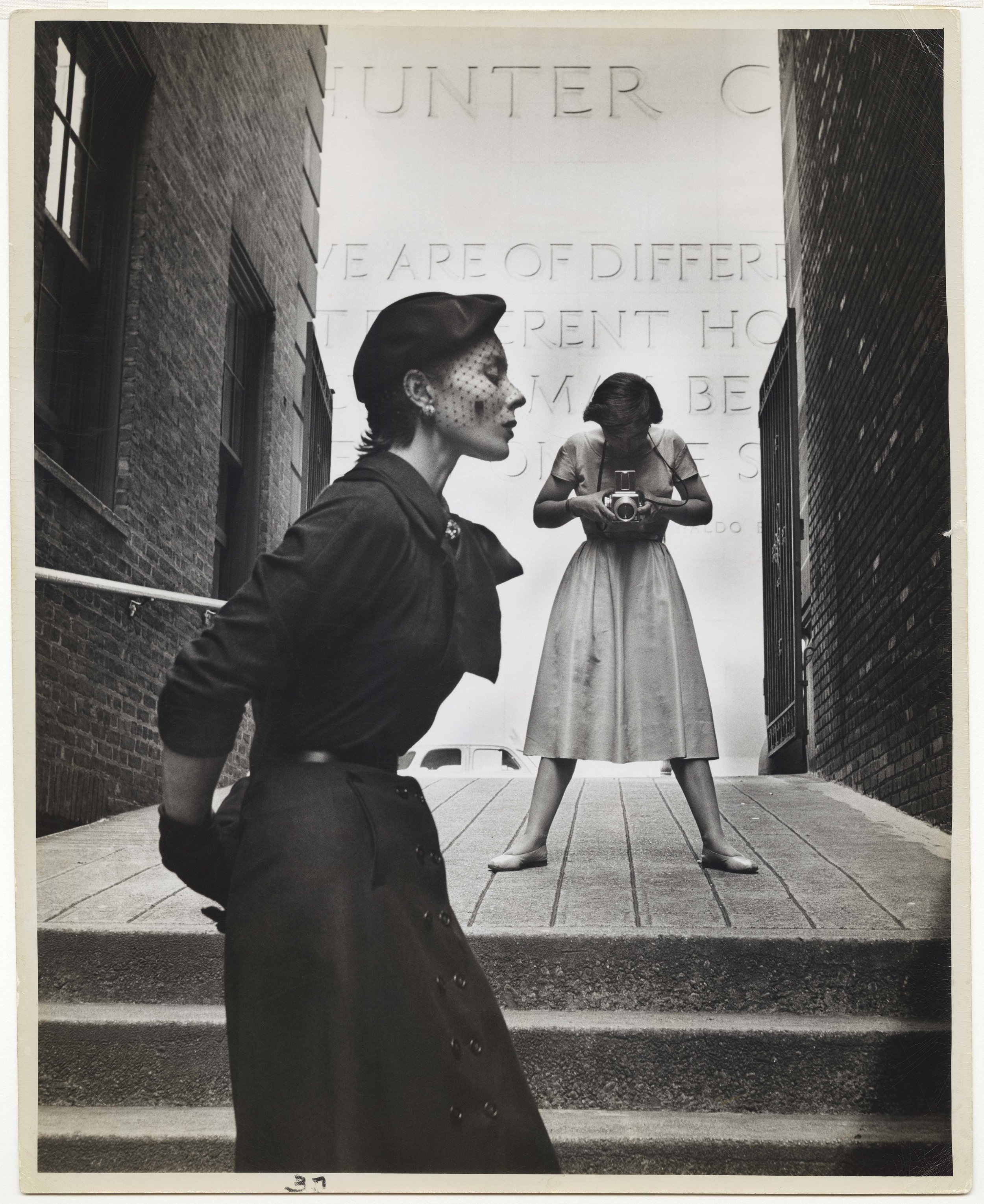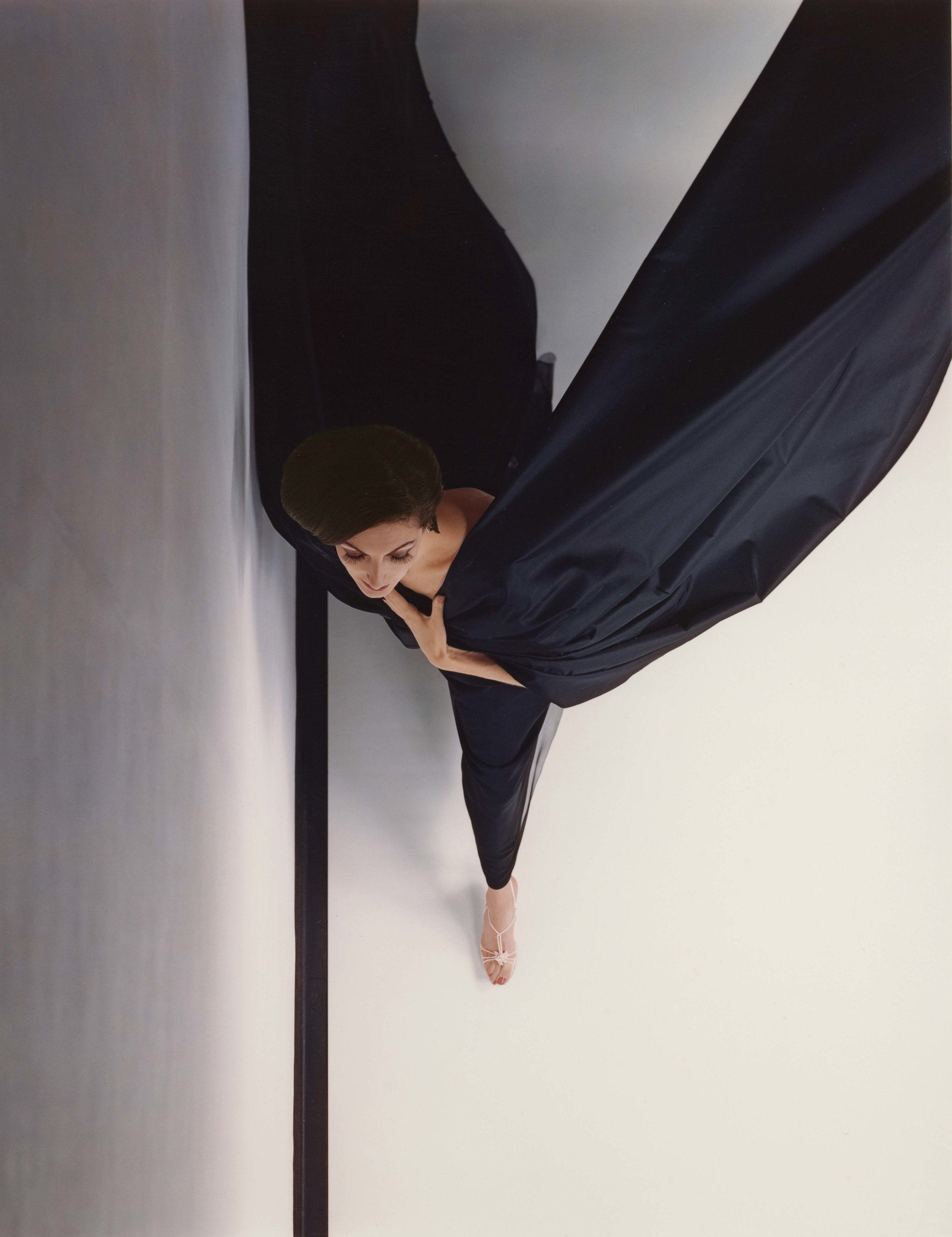Book Review: Icons of Style by Paul Martineau
GORDON PARKS (American, 1912–2006), Bettina and Frances McLaughlin-Gill, New York, 1950. Gelatin silver print, 34.3 × 27.3 cm (131⁄2 × 103⁄4 in.) Collection of Beth Rudin DeWoody. Photograph by Gordon Parks / Courtesy of and © The Gordon Parks Foundation
By Emma Coyle
Paul Martineau’s Icons of Style is a dense book, large enough to rest on a coffee table, but so thoroughly researched that there is no way that it would ever gather dust. It is worth reading deeply just as much as the photos of fashion covering all the changes from over the last century could be studied for days. Everything about this book makes it an essential read to understand clothing, photography, and their role in our lives. Every image included within the book further illustrates the way fashion photography has changed culture.
HERB RITTS (American, 1952–2002), Stephanie, Cindy, Christy, Tatjana, Naomi, Hollywood, 1989. Gelatin silver print, 46.8 × 50.3 cm (18 7⁄16 × 19 13⁄16 in.) Los Angeles, J. Paul Getty Museum. Gift of Herb Ritts Foundation, 2011.18.28. © Herb Ritts Foundation
The foreword by Timothy Potts, director of the J. Paul Getty Museum, describes fashion photography’s role as an essential time capsule, creating “some of the most iconic images of their times”. It covers artistic fashion photography from 1911 to 2011. This large swath of time, development, and images can hardly be grasped and certainly is intended to be devoured from cover to cover. Flipping past the foreword and unable to quench the impulse to linger on the remarkable images, the first essay is revealed.
HIRO (American, born China, 1930), Black Evening Dress in Flight, New York, negative, 1963; print, 1994. Dye imbibition print 48.9 × 38.1 cm (191⁄4 × 15 in.) Los Angeles, J. Paul Getty Museum, Purchased with funds provided by the Photographs Council, 2012.24.2. © Hiro
This first section is an introduction by Martineau that details the changes of fashion and fashion photography from exclusively functional to artistic and expressive which is argued by art critic Gene Thornton as “express[ing] in visual terms the ideals of the age–a function traditionally associated with fine art”.
JAMEL SHABAZZ (American, born 1960), The Latin Connection, negative, 1982; print, 2018. Chromogenic print, 25.4 × 20.3 cm (10 × 8 in.) Hempstead, NY. Courtesy of Jamel Shabazz
Icons of Style explores the dichotomy of what is included within the frame of a photo and what is excluded, and the creation of distinct worlds. The second essay, by Anne McCauley, details the transformation of photography from a blended form, where retouching was completed by painting on the glass panes before printing, to a naturalistic styling of the models. This book covers the transition from magazines dictating the styles seen as people walked along the street to the modern day where fashion trends come from the populace and then influence what is seen in media. It’s a reversal, almost carnivalesque in style. And it can so clearly be seen in the way that the photographs included in this book go from highly staged to naturalistic, idealized to realistic. They lose none of the magic or beauty–for which fashion photography is known–along the way.
MAN RAY (American, 1890–1976), Model Wearing a Gown by Augustabernard, 1936. Gelatin silver print 28.9 × 22.7 cm (113⁄8 × 815⁄16 in.) Los Angeles, J. Paul Getty Museum, 84.XM.1000.53. © Man Ray Trust ARS-ADAG
The next essay by Paul Martineau, Style in the Face of Crisis, continues following fashion photography chronologically, focusing on Depression Era and World War Two strategies employed by photographers and editors to survive and thrive in adversity. Martineau considers “fashion photography (like fashion itself)” to be a “reactive genre” that molds itself to the conditions under which it exists. The images from this section are highly influenced by surrealism, especially seen in the included work by Man Ray. Imagine the beautiful large pages of the book opening to not only amazing fashion but an extension of the art movements of the time (for example: modernism and surrealism). A cultural snapshot saved in magazines and finally recognized here.
HERB RITTS (American, 1952–2002), Fred with Tires, Hollywood, 1984. From the Body Shop series. Gelatin silver print, 47.1 × 38.6 cm (189⁄16 × 153⁄16 in.) Los Angeles, J. Paul Getty Museum. Gift of Herb Ritts Foundation, 2011.18.25. © Herb Ritts Foundation
Susana Brown leads us into the post war period by Letting the Skirts Down with Cristian Dior’s “New Look” and the photographers who captured the vitality and grace of the change in style. In the images from this section there is an intense change over the time covered. Fashion went from the nipped waists photographed by Irving Penn and Cecil Beaton, to the very recognizable portrait of Twiggy captured by Barry Lategan. Color and movement seem to be consistent themes that only increased in the frequency of their use as culture shifted towards youth and liberation.
SHEILA METZNER (American, born 1939), Uma in Dress by Patou, 1986. Pigment print, 62.7 × 41.8 cm (24 11⁄16 × 16 7⁄16 in.) Los Angeles, J. Paul Getty Museum. Purchased with funds provided by the Photographs Council, 2016.90. © Sheila Metzner
Michal Raz-Russo takes over the next period (1970 to 1989) From Rebellion to Seduction and asserts that “cultural attitudes are as integral to fashion photographs as clothes”. Moving away from the fantastical and dreamy sixties advertising style to a more in your face, direct, and confrontational approach in the seventies. This was “an era in fashion photography that valued attitude over product”. A very culturally dense section of the book, this essay continues on to discuss and show photographs of punk, hip-hop street styles and designate subversion as focus of this time period where “fashion became a central form of cultural expression”.
GLEN LUCHFORD (British, born 1968), Kate Moss, Times Square, New York, negative, 1994; print, 2017. Gelatin silver print, 50.8 × 61 cm (20 × 24 in.) Los Angeles, J. Paul Getty Museum. Gift of Glen and Tanya Luchford, 2017.121.1. © Glen Luchford
The final essay by Ivan Shaw, entitled Ye Fakers: Realism and Fantasy, covers the most recent past in fashion photography from 1990 to 2011. Many of the images included in this section may be more familiar to readers. All the photographers in this section show how this was a moment of time where “our mind-sets and attention spans could now handle diverging points of view”. You can see in Steven Meisel’s photos the way he introduced hip-hop’s idea of sampling to photography wherein he used ideas from previous photographers to create new meaning.
NEAL BARR (American, born 1932), Diana Newman, 1966. Gelatin silver print, 43.2 × 35.3 cm (17 × 13 7⁄8 in.) Los Angeles, J. Paul Getty Museum. Purchased with funds provided by the Photographs Council, 2016.94. © Neal Barr
The trajectory of Icons of Style: A Century of Fashion shows that there is a clear move from capturing a moment towards creating a fashion scene. At the end of each chapter there is a large section of images that were referenced throughout the essay, printed as large page filling scenes that showcase the changing style over the time period covered. Each image deserves to be hung on the wall, printed reproduced and most definitely included in this expansive book.
















